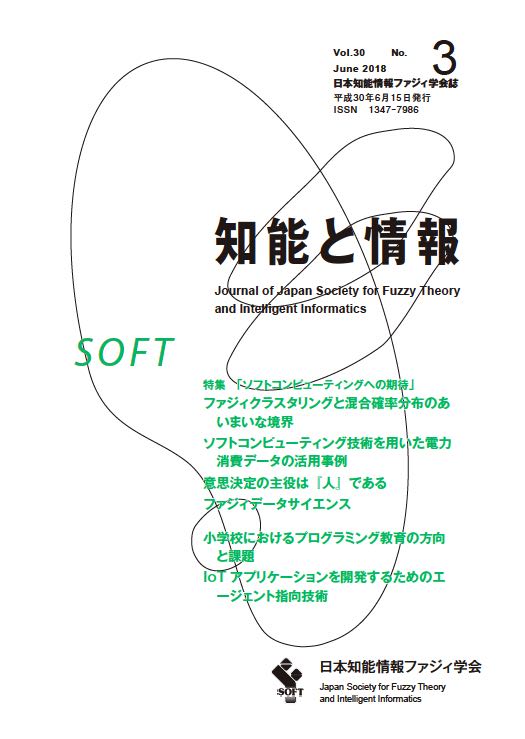Volume 30, Issue 3
Displaying 1-21 of 21 articles from this issue
- |<
- <
- 1
- >
- >|
-
2018Volume 30Issue 3 Pages toc-
Published: June 15, 2018
Released on J-STAGE: June 15, 2018
Download PDF (136K)
-
2018Volume 30Issue 3 Pages 123
Published: June 15, 2018
Released on J-STAGE: June 15, 2020
Download PDF (182K)
-
2018Volume 30Issue 3 Pages 124
Published: June 15, 2018
Released on J-STAGE: June 15, 2020
Download PDF (211K)
-
2018Volume 30Issue 3 Pages 125-127
Published: June 15, 2018
Released on J-STAGE: June 15, 2020
Download PDF (366K) -
2018Volume 30Issue 3 Pages 128-130
Published: June 15, 2018
Released on J-STAGE: June 15, 2020
Download PDF (849K) -
2018Volume 30Issue 3 Pages 131-132
Published: June 15, 2018
Released on J-STAGE: June 15, 2020
Download PDF (282K) -
2018Volume 30Issue 3 Pages 133-136
Published: June 15, 2018
Released on J-STAGE: June 15, 2020
Download PDF (569K)
-
2018Volume 30Issue 3 Pages 137-147
Published: June 15, 2018
Released on J-STAGE: June 15, 2020
Download PDF (1134K) -
2018Volume 30Issue 3 Pages 148-156
Published: June 15, 2018
Released on J-STAGE: June 15, 2020
Download PDF (653K)
-
2018Volume 30Issue 3 Pages 157
Published: June 15, 2018
Released on J-STAGE: June 15, 2020
Download PDF (207K)
-
2018Volume 30Issue 3 Pages 158
Published: June 15, 2018
Released on J-STAGE: June 15, 2020
Download PDF (216K) -
2018Volume 30Issue 3 Pages 158
Published: June 15, 2018
Released on J-STAGE: June 15, 2020
Download PDF (216K)
-
2018Volume 30Issue 3 Pages 159-162
Published: June 15, 2018
Released on J-STAGE: June 15, 2018
Download PDF (246K)
-
2018Volume 30Issue 3 Pages 163
Published: June 15, 2018
Released on J-STAGE: June 15, 2020
Download PDF (178K)
-
2018Volume 30Issue 3 Pages 164-165
Published: June 15, 2018
Released on J-STAGE: June 15, 2018
Download PDF (314K)
-
2018Volume 30Issue 3 Pages 166
Published: June 15, 2018
Released on J-STAGE: June 15, 2020
Download PDF (89K)
-
2018Volume 30Issue 3 Pages 167
Published: June 15, 2018
Released on J-STAGE: June 15, 2020
Download PDF (198K)
Special Issue: FSS 2017 Short Notes
Short Notes
-
Article type: ショートノート
2018Volume 30Issue 3 Pages 565-570
Published: June 15, 2018
Released on J-STAGE: June 15, 2018
Download PDF (1442K)
Regular
Original Papers
-
2018Volume 30Issue 3 Pages 571-580
Published: June 15, 2018
Released on J-STAGE: June 15, 2018
Download PDF (1935K) -
2018Volume 30Issue 3 Pages 581-590
Published: June 15, 2018
Released on J-STAGE: June 15, 2018
Download PDF (1790K) -
2018Volume 30Issue 3 Pages 591-604
Published: June 15, 2018
Released on J-STAGE: June 15, 2018
Download PDF (1357K)
- |<
- <
- 1
- >
- >|
